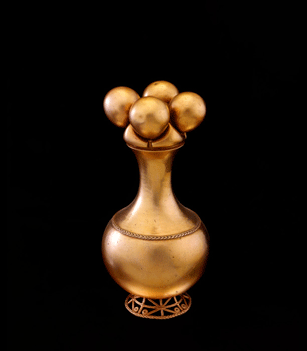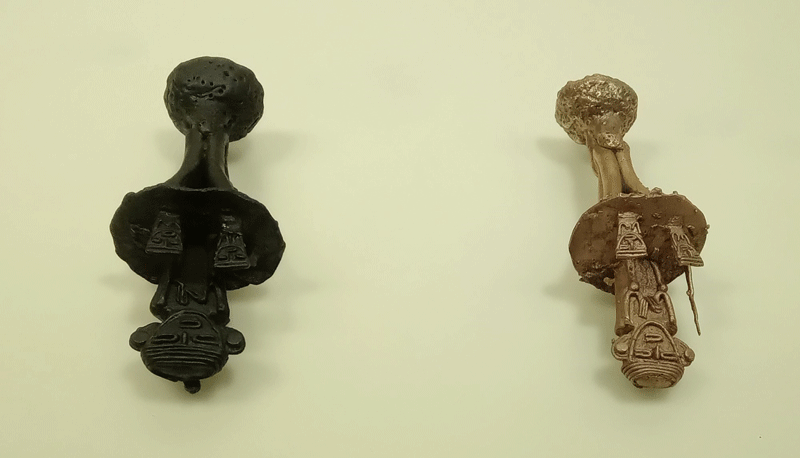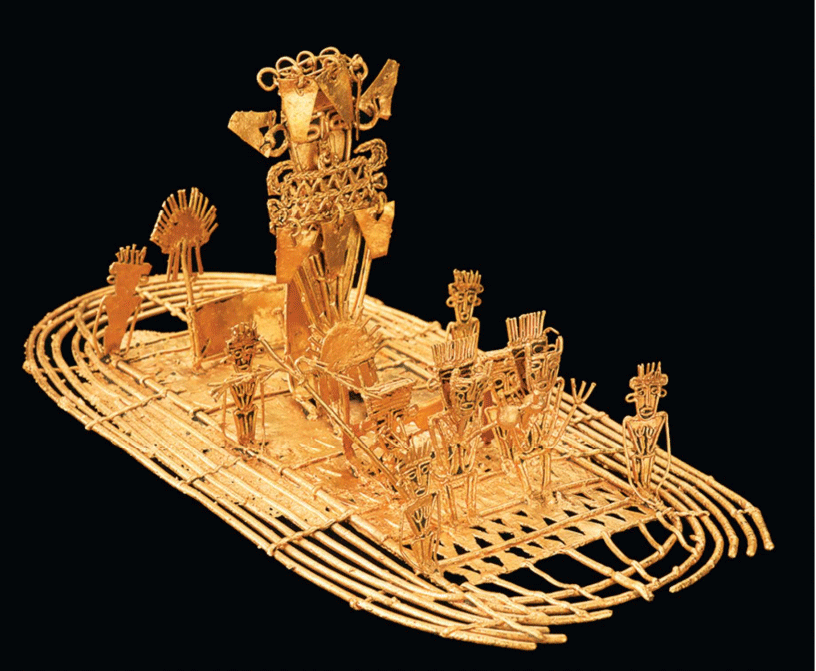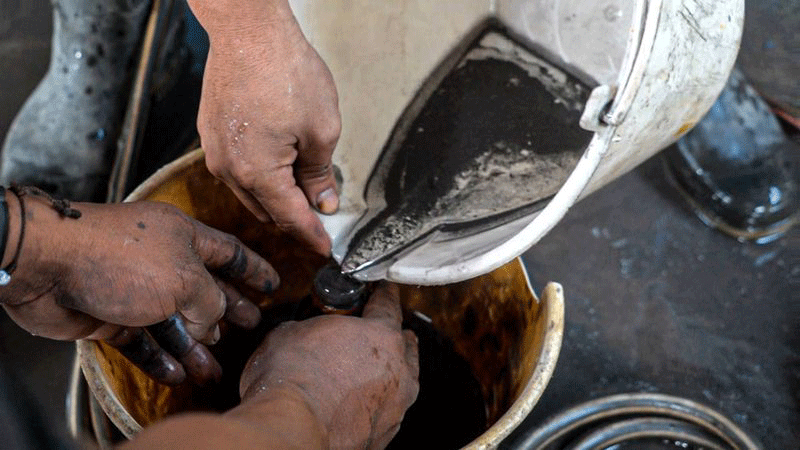As we are now facing climate change, we start to look back on ancestral knowledge to find some clues of our role in nature's balance and eventually recover Earth.
The Museo del Oro (Gold Museum) is an exceptional space to start with. It is a cultural spot located in the historical center of Bogotá, Colombia, dedicated to the pre-Columbian native communities that lived in the eastern range of the Andean Mountains for thousands of years before the Spaniards’ conquest. This museum displays the magnificent artwork made by these communities, which was mostly based on goldsmithing and in which the Muisca community were quite outstanding.

The Muisca community were exceptional goldsmiths of gold, silver, copper, platinum, and tumbaga metals. They had a unique perception of gold in their cosmogony, as it was seen as the most meaningful oblation to their god, the sun. They thought this metal was forged by the sun’s sweat (energy) – a product of his endless job of turning around the galaxy (the Milky Way) and by which he was conveying his knowledge, energy, frequency, vibration, and light to them. Therefore, gold represented a bridge between them and the sun so that they could communicate with each other.
In order to receive all the sun's gifts, the Muiscas mimic the sun's job, so they forged this metal too. By doing so, they would comprehend this job as one of light consciousness, coherent, and ordered work, and they would accept the permanence of change.
They made countless gold figures depicting their gods and cosmogony, manufactured by a method called, “lost-wax.” They would first create a model using beeswax, “the next step would be the creation of the mold around it [...] the entire wax model would be covered by a charcoal and clay mix, except for an opening at the raft’s bow, which would serve as the pouring channel [...] Upon drying, the mold would retain the shape of the wax object, and the artisan could proceed to melt the wax out at around 60 C. The void left inside the clay mold would thus constitute a unique, irreplaceable, perfectly accurate negative of the wax model. Before the molten gold alloy was poured into this void, the mold was preheated to a considerable temperature, probably of several hundred degrees”, according to a research published in the book, Pre-Columbian Central America, Colombia, and Ecuador.

Each figure was unique, as was its purpose. The Muiscas conceived gold as part of some kind of cycle they would have to carry out to maintain nature’s balance. As they understood gold as a gift from the sun, they gave it back to the sun god and other gods as an offering through a ritual called, “ATA-TA”. In this ritual, they put their offerings in a clay pot, and by standing at the shore of a sacred lagoon (which they saw as the belly of Mother Earth), they throw their offerings into the water. In addition, they would also wear gold earrings, nose rings and bangles –especially the "Cacique" (their leader), who would be the one wearing the most gold in the community.
At times of “El Dorado” ceremony, the Cacique would be covered with gold dust and embark on a reed raft laden with gold and emerald offerings, to throw them and himself too in the lagoon.

"During ceremonies, the hanging plates on the ornaments twinkled in the light and gave off metallic sounds, which helped them to transform those present and enable them to communicate more easily with their gods," states one of the museum descriptions.
Thus, the idea of changing the current meaning around gold, by receiving not just the Muiscas’s understanding but nature's itself too, would have a very good impact on all aspects of human and planet’s life. An action that would definitely promote all the United Nations Sustainable Development Goals, but mainly the Peace, Justice and Strong Institutions, Climate Action and Good Health and Well-Being.
Why don't we use the Muisca's gold belief as a model to reshape our own and contribute to the end of gold exploitation?
Gold is conceived as the most valued economic good, it measures and defines the system we are in today. Under this meaning we have caused overexploitation of the mountains and countless negative consequences on society – instances such as wars because there is an endless fight for the territory containing this metal to do illegal mining; sickness because the informal miners have to use mercury in a rudimentary way for the gold processing; inequality and many more.

Perhaps many of us could be indifferent to this ancient cosmovision as it may seem fantastic and for some, with no sense at all. However, it is more sensible than it appears. The Muiscas understood the uniqueness and limit of gold in the universe. They saw its presence as a miracle and a gift from the sun, which it actually is, as this metal came from a supernova millions of years ago. We, surely, could not witness more gold coming to earth in our life but we can give it back to mother earth for recovering her balance and human evolution.
